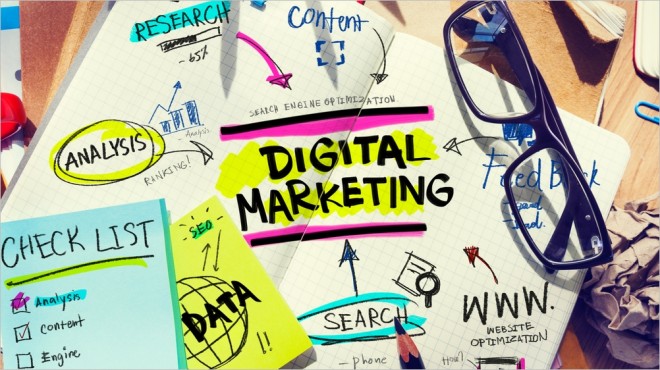
With digital marketing, there are some direct benefits. The indirect benefits, however, are more. While the advantage of new age marketing methods, such as inbound marketing, is that you can track, analyze, and dig your head into folds of data – it also makes it hard for you track actual purchase and customer transaction flows.
Let’s assume that you have an eCommerce store and you sell a line of products. You are possibly everywhere you should be, and doing what you should: Email marketing, blogging, guest blogging, active social media management, and even publishing parallel content such as slide decks and videos.
So, let’s see how customers find and interact with you (with commercial intent). Here’s how a transaction might play out:
- A customer does a direct, keyword-based search on Google. You show up on SERPs and they land on your product page to buy. Simple enough.
- A customer checks out a particular product’s features by entering the URL into their browser or from a bookmark (so, they know you well enough at this point to pay you a direct visit). They may not buy anything yet. When they are finally ready and satisfied, they visit once more and then buy.
- A customer reads a couple of blog posts, heads out to Twitter or Facebook and follows you there. From this point on, everything you publish feeds into their stream. At this point, they might be passive, but a few days later, they see a product they like on their stream and make an impulse purchase.
- A customer reads a post on your blog and leaves. A few months later, they read a guest post you did on another publication. They arrive on your blog and subscribe to your newsletter. Fast forward six months and they visit your online store through a call to action within your email (in response to an irresistible offer) and finally make a transaction.
See how many possible touch points there could be within your digital marketing process?
That’s why you don’t need to come on too strong on your customers. The intent of inbound marketing is to make them come to you, when they are ready. All you have to do, apart from the monstrosity of work that digital marketing can be, is be ready for them when they turn up.
Yet, you can still nudge, push, and make things happen. Social marketing (by that, I mean being social on digital platforms) allows you to do that. Here’s how to nudge customers closer to purchase through digital marketing:
Email: The Perfect Nudge Machine
Here’s the best thing about email: It’s exclusive, it allows for personalization, it helps to drip feed information slowly, and it can trigger commercial transactions (leaving the onus of taking action on the customer, not you). More than 57% of B2B customers actually make buying decisions based on email messages even before engaging with a sales representative.
Emails also help you nurture leads. As research by The Annuitas Group reveals, nurtured leads make 47% larger purchases than non-nurtured leads.
You can achieve tons by taking advantage of advances in email technology. Milk email the right way by using a series of auto responders, chunks of marketing automation, event-based or trigger-based email, transactional messages, and clever segmentation.

Presentation, Conversation, Transaction
Let’s consider social media marketing, which is the next big thing after email. Most businesses look for ROI (return on investment) on resources spent on social media. Don’t expect business from social media directly – it’s not built for that. What does work is the constant babble that’s the mainstay of social networks.
People talk about issues. Many share their problems and look for answers, so:
- Share valuable content created by others.
- Create, curate and share your own content.
- Engage and dive deep into conversations.
- Solve problems that are plaguing people. (Better yet, without anyone asking for it.)
- Use social media to network. Really, hustle with grace.
When you show up on social, you are in presentation mode. When you do all of the above, you are in engagement mode. Sooner or later, provided you have a great product, your customers get into the transaction mode.
It’s the simple, 3-step secret (not so much anymore) to social media mastery. Do it and measure the nudge.

The Power of Social Communities
Social media updates are byte-sized, quick, and have a short lifespan. Your contributions to a community (relevant to your niche) experience a relatively longer and more meaningful existence.
For most niches, Quora is teeming with questions begging for your answer. LinkedIn Groups have an ever-growing inventory of problems that need solutions. If you are a coding specialist, StackOverflow has more answers than your programming manual.
Keep doing it without expecting much and see what happens.

The Underdog Effect
In his book David & Goliath: Underdogs, Misfits, And The Art of Battling Giants Malcolm Gladwell lists stories of how underdogs almost always win against giants (applicable everywhere).
So, why are we talking about this?
People first take notice when you are the underdog. Then, they slowly begin to appreciate what you are trying to do. Eventually, they’ll fall in love you. On social marketing, apply the “underdog effect” for your business. Be the lovable little guy. The days of the proud, battle-ready, resource-rich, and too-big-to-notice giants are numbered.
Take time out to reach every person who interacts with you on social media (or elsewhere). Pay attention to mentions, hashtag driven queries, questions and random conversations. They might all appear casual, but they aren’t. They are opportunities for you to tap into. They are conversations that lead to transactions.
Setting up a business is one thing. Getting customers to engage, converse and convert will require undulating focus, attention to detail, ability to multi-task and cater to multiple touch points. It’s people you are doing business with – not SKUs, Twitter handles, and customer support ticket numbers.
Conclusion: Mastering the Art of Digital Marketing Engagement
In the realm of digital marketing, the benefits are multifold, with some being direct and others more nuanced. While the advantages of contemporary marketing techniques like inbound marketing are apparent in their ability to track and analyze data, there remains a challenge in tracing the intricate journey of customers from initial engagement to final purchase. The analogy of an eCommerce store selling products serves as an excellent backdrop to understand the complex interactions that occur within the digital marketing process.
The journey of a potential customer traversing through the digital landscape involves multiple touch points, each potentially contributing to the final transaction:
- Direct Keyword Search and Purchase: Customers who directly search and find your product on search engine results pages (SERPs) proceed to your product page and make a straightforward purchase.
- Direct Visits and Consideration: Customers who directly visit your website might not make a purchase immediately. After familiarizing themselves with your offerings, they return later to make a transaction.
- Engagement and Impulse Purchase: Some customers engage with your content through blogs and social media, seemingly passive at first. However, a well-timed product offer might lead to an impulse purchase.
- Long-Term Engagement and Conversion: Others engage with your content over time, through various channels like blog posts, guest posts, and newsletters. This extended engagement eventually culminates in a purchase.
| Touch Point | Description |
|---|---|
| Direct Keyword Search and Purchase | Customers search for your product on search engine results pages (SERPs) and proceed to your product page for a straightforward purchase. |
| Direct Visits and Consideration | Customers visit your website, explore your offerings, and return later to make a transaction after thorough consideration. |
| Engagement and Impulse Purchase | Customers engage with your content on blogs and social media, potentially making an impulse purchase when presented with a timely product offer. |
| Long-Term Engagement and Conversion | Customers engage with your content across multiple channels, such as blog posts, guest posts, and newsletters, leading to extended engagement and eventual conversion. |
| Comprehensive Approach and Inbound Marketing | These diverse touch points underscore the importance of a comprehensive and patient approach in digital marketing. Inbound marketing prioritizes attracting ready customers, fostering an intricate dance of engagement and responsiveness. |
These diverse touch points emphasize the necessity of a comprehensive and patient approach to digital marketing. Inbound marketing, as an embodiment of this philosophy, aims to attract customers when they are ready rather than forcing a sale prematurely. It’s an intricate dance of engagement and responsiveness.
The power of email emerges as a pivotal tool in this dance. Email’s personalized and exclusive nature facilitates incremental information sharing, leading to potential commercial transactions. With more than half of B2B customers making buying decisions based on emails, and nurtured leads making larger purchases, email technology’s advances enable businesses to orchestrate effective marketing campaigns. By combining autoresponders, marketing automation, trigger-based emails, and clever segmentation, businesses can nudge customers closer to purchase with precision.

Social media, the next significant avenue, doesn’t guarantee direct business but thrives on constant engagement and conversation. Sharing valuable content, curating original material, participating in conversations, and solving problems create an environment where customers feel heard and valued. Over time, this engagement transitions into transaction, making the three-step sequence of presentation, engagement, and transaction the cornerstone of social media mastery.
Moreover, social communities offer a longer-lasting impact compared to fleeting social media updates. Platforms like Quora and LinkedIn Groups provide opportunities to contribute value and solve problems within a relevant niche. The underdog effect, reminiscent of stories where underdogs triumph over giants, plays a role in social marketing. Embracing this effect, businesses can genuinely engage with customers, dedicating time to every interaction and conversation, transforming them into meaningful transactions.
In conclusion, excelling in digital marketing engagement involves recognizing the intricate dance of touch points and leveraging tools like email and social media to nudge customers closer to purchase. By embracing the underdog effect, listening attentively, and valuing every interaction, businesses can transform mere interactions into lasting relationships. Success in digital marketing isn’t just about setting up a business—it’s about crafting meaningful connections with individuals and understanding that every interaction is a conversation leading to a transaction.
How do you go out of the way to engage with your customers? Do you have any tips on how to nudge customers to purchase?
Marketing Photo via Shutterstock, Social Photo via Shutterstock, Community Photo via Shutterstock
This article, “4 Ways to Nudge Customers Closer to Purchase with Digital Marketing” was first published on Small Business Trends
Save money on shipping costs for your Amazon purchases. Plus, enjoy thousands of titles from Amazons video library with an Amazon Prime membership. Learn more and sign up for a free trial today.